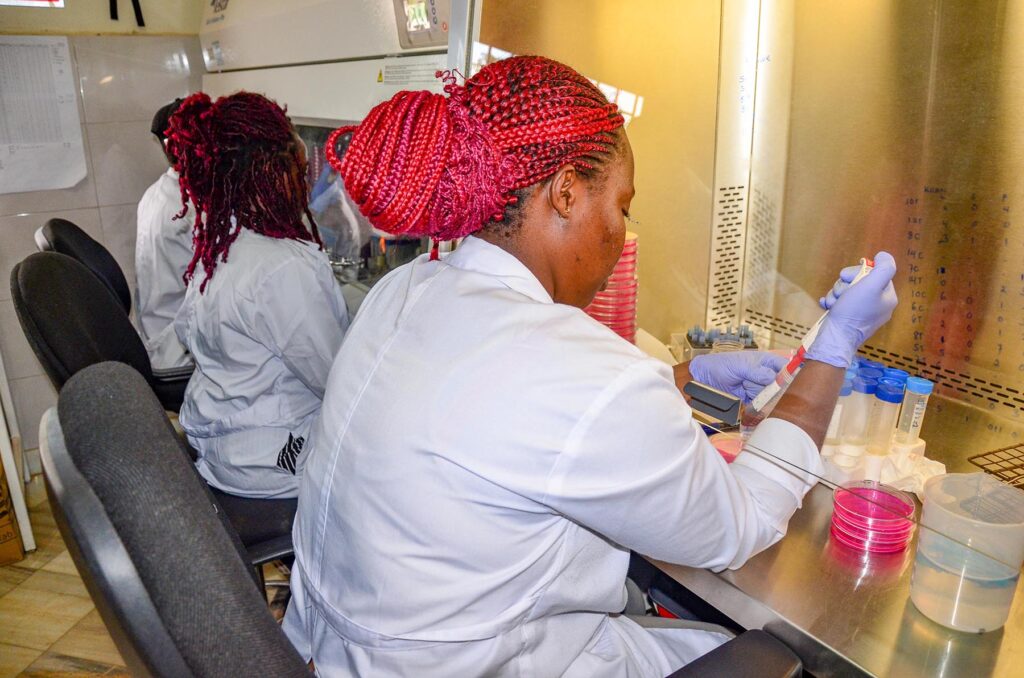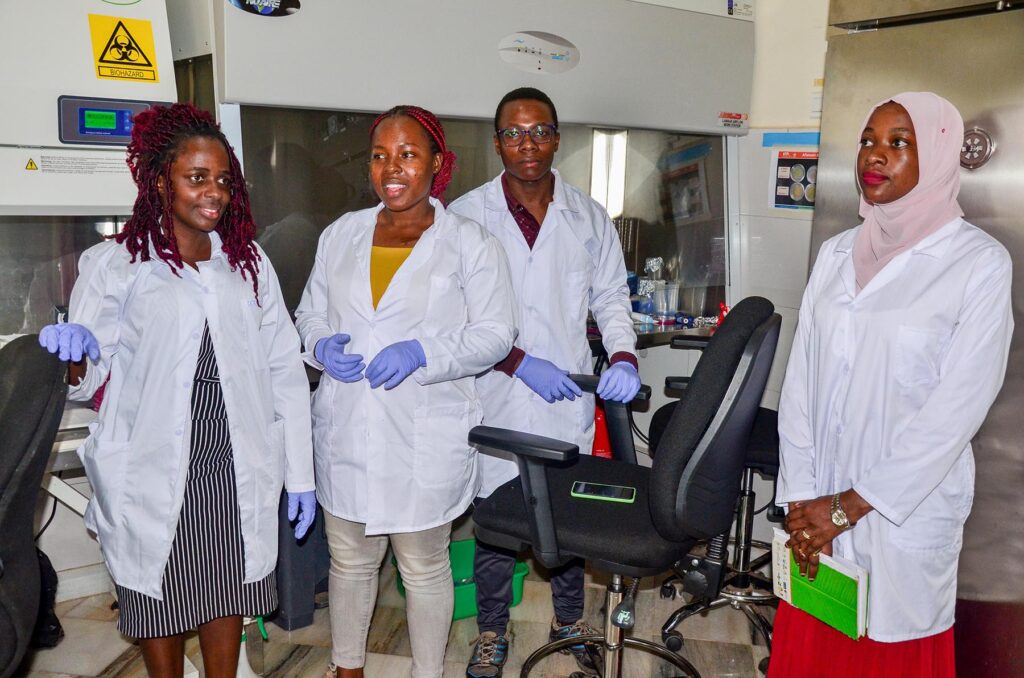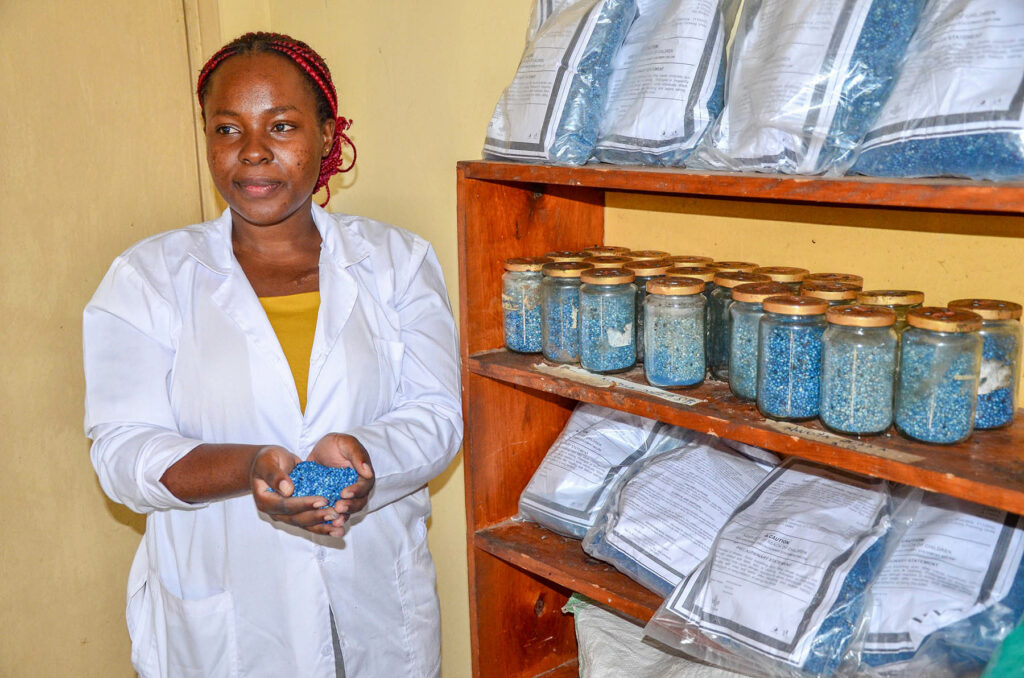By HERBERT MUSOKE
The International Institute of Tropical Agriculture (IITA) is one of the world’s leading research partners in finding solutions to hunger, malnutrition and poverty.
The institute’s research for development covers bioyltechnology and genetic improvement, natural resources management, plant production and health, social sciences and agribusiness.
IITA is a member of the Consortium of International Agricultural Research Centre (CGIAR) established in Ibadan-Nigeria.
In Uganda it was established in 1992 in Kampala with research stations in Sendusu, Namulonge and Serere. CGIAR is present in 21 African countries with 19 stations in four hubs; East African hub, West African hub, Central African hub and South African hub.
“At the start, we were focusing on maize and cassava breeding where we helped National Agriculture Research Organization bringing in material which is resistant to cassava mosaic and cassava brown streak virus diseases, improve matooke and some of the varieties released came from that collaboration at among others,” Dr. George Mahuku, the IITA country representative, explains.
The International Institute of Tropical Agriculture (IITA) is a non-profit organisation focusing on agricultural innovations to meet Africa’s most pressing challenges of hunger, malnutrition, poverty and natural resources degradation.

Dr. Mahuku explains that as crop scientists, they analyse farming methods and food production methods to enhance safety and crop yield and protect the crops in the field through chemical, crop genetic improvement and enhancement of natural enzymes.
IITA works with partners across Sub-Saharan Africa to improve livelihood, enhance food and nutrition security and increase employment.
The institute has programmes on smart agriculture that aimed at environmental protection especially usable technologies like irrigation, value addition and how they can be distributed widely.
Dr. Mahuku says that they have come up with numerous innovations Aflasafe being one of the many and the currents one but also most sensitive given the fact that its impact can not be seen with physical eyes yet very important in human lives.
“Among other Innovations are the applications like Stepwise, which can be used in coffee and maize. With this app, we do a farmer segmentation according to their levels of education and incomes among others such that the technology is tailored for that particular group of persons since farmers are heterogeneous,” he says.
Others include the Shade Tree App for coffee, seedtracer App which is used to trace seeds like cassava and using that app, one can know who is a certified producer and where they are located.
Fighting aflatoxins
In 2021, Kenya banned importation of maize from Uganda on grounds of high aflatoxin levels in the crop that caused a loss of about shs447bn to Uganda in revenues according to bank of Uganda.
To resolve the challenge of aflatoxins, IITA developed Aflasafe, a natural product, which is applied in the field and reduces aflatoxin contamination by 80% – 99% from farm to plate.
AFLASAFE
Dr. Mahuku explains that aflasafe is a nature-based solution to minimize aflatoxin contamination in the crop harvest. “From research, we have learnt that aflatoxins contamination starts from the field and not at post-harvest level. This, therefore, means that we need to deal with it right from the field.”
He explains that in the field there are different types of fungi belonging to the aspergillus flavus family. There are those that cause aflatoxin and those that don’t produce the toxin.

“So, we go to the environment and pick those fungi that don’t produce the toxins and we realized that these thrive better in the environment than those that produce aflatoxins. So, we characterize these in the laboratory to make sure that they don’t produce the toxin or that they don’t belong to the group that produces toxins such that when they are put back to the environment there is no chance that they will mix or exchange genetics with the toxic producers,” he says.
In the field, they have a competitive advantage because of their numbers so by the time the toxic fungi start producing, the nontoxic one will have occupied the whole space. Thus the toxic fungi is put out by competitive exclusion process since the nontoxic will have occupied the space.
“Aflasafe is a biological control process that utilises fungi that don’t produce toxins to outcompete or displace toxin producers. Once the toxin producers are displaced, you don’t get aflatoxins,” he explains.
He explains that if your maize had aflatoxins from the field, even when you protect it at the post-harvest level, it will always have the fungi. Thus, aflatoxin should be dealt with throughout the value chain; from the garden to the plate with good practices.
“Aflatoxins are not seen, tasted nor smelt but we know that there are fungi that produce it. These fungi thrive when the crop is under stress which is mainly during drought. This is why, aflatoxins are increasing because of the climatic changes characterised by prolonged droughts unlike before when there was rains and crops were healthy.
This is because the stress put on the crop because of drought and high temperatures makes the crop vulnerable to infection by aspergillus.

How to apply
Dr. Mahuku explains that the application is very simple as it is simply broadcast into the field 2-3 weeks before flowering once every crop cycle. At the time when the crop starts elongating its stems, the fungus increases its production to enter the crop.
“Aflasafe is now commercially used in Kenya and Tanzania. You need 4kgs per acre which will cost between sh3,700 and sh5,600 per kilogram. Farmers should follow clear information in the packages to know when to apply aflasafe. But also, when maize starts elongating the stems, you know it is time to apply,” he says.
He explains that this product is living and it needs moisture and all it needs is morning dew to start multiplication.
Challenges
Dr. Mahuku says that there is still a need to sensitize every stake holder in the grain sector to start demanding for aflatoxin free products.
“When we demonstrated aflasafe with farmers in Mityana, they were saying their maize was the same as the other maize simply because you won’t see any difference in growth or appearance. We, therefore, need to create awareness about aflatoxins such that consumers become conscious,” he adds.
Jalia Nalubega, a biologist with IITA, explains that they have challenges of funding as they have a lot to tests but they are constrained with resources.
“Research takes a long time to get the results and may require redoing the same tests several times. However, there are reagents that we need and are imported but the bureaucracy with importation slows us down,” she says.
Working with aBi
Dr. Mahuku says that they are in partnership with aBi in everything they do. “We report every quarter on everything we have done and they look at the key indicators and we discuss where we need support financially ,” he says.
“As IITA, our major focus is on human health since we know the aflatoxin is linked to cancer, stunting, immunity deficiency which increases the disease burden and we know that majority of the population is rural based who eat what they produce and using the product that protects them at the farm so that what they sale and what is left for the family is safe,” he says.
Future
He explains that they are going to develop an aflasafe tracer that will be linking farmers using aflasafe to the buyers like breweries such that when they go to buy and the gain passes the taste, they are given some more as an incentive to those farmers who use aflasafe.
“We are finalizing on registering the product with the Ministry of Agriculture, Animal Industry and Fisheries such that it becomes commercially available to farmers hopefully by next rain season,” he says.
Also, they are developing a commercialization strategy where they will get the investor willing to make money from this product and then make all farmers know about the product by setting up demonstration farmers in different regions.
He explains that the institute is in negotiations with possible buyers like; the breweries, the East African grain council such that farmers who incur an extra cost to use Aflasafe can be paid an extra fee compared to those who don’t use it which will compel others to embrace the product.
“With all of this, we are sure the act of Kenya or any other country banning our maize saying it is full of aflatoxins will be for the past and rather just negotiate for better and higher prices,” he says.





